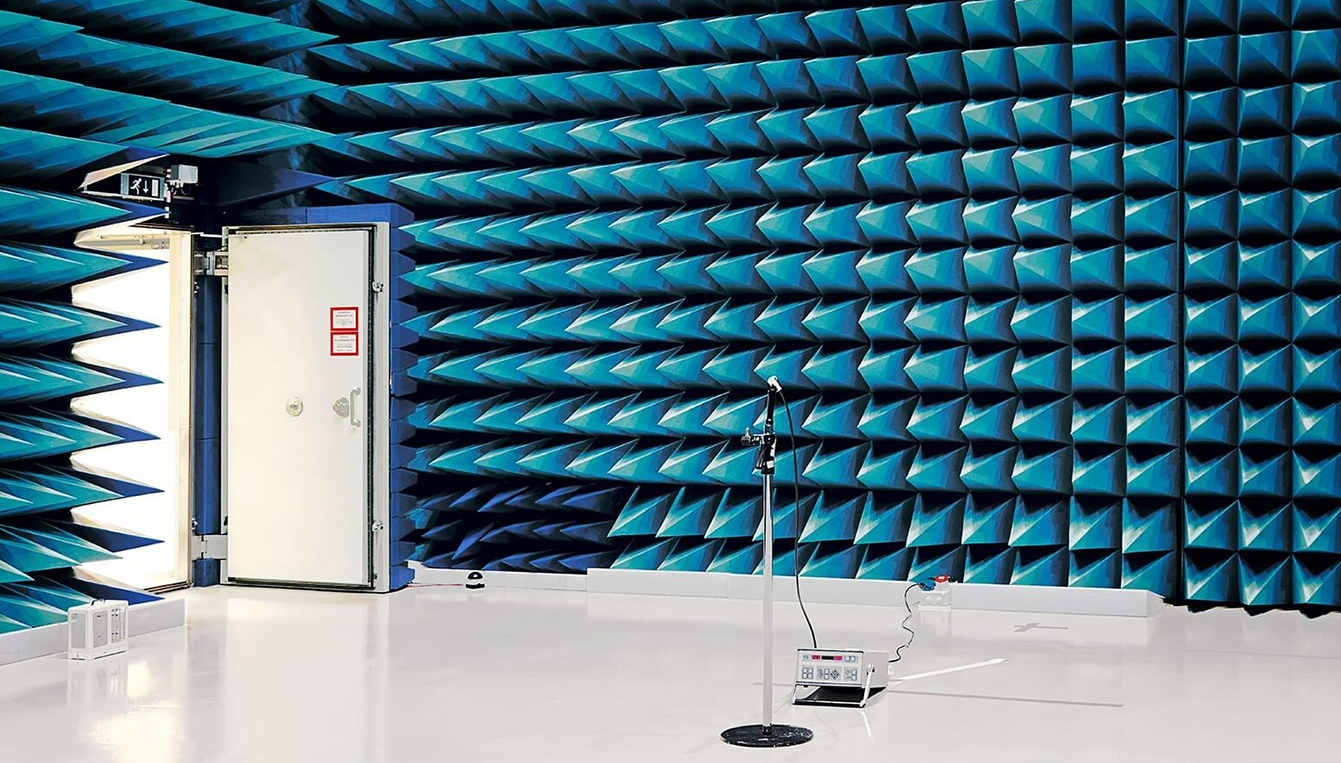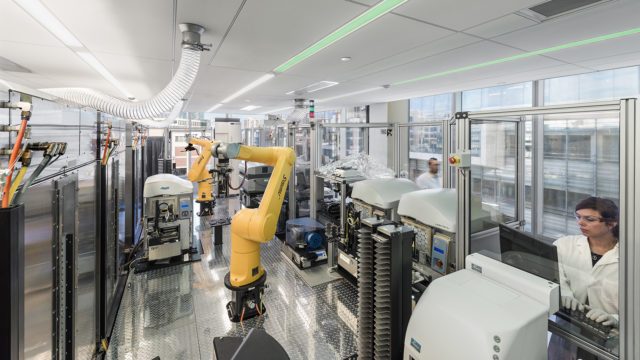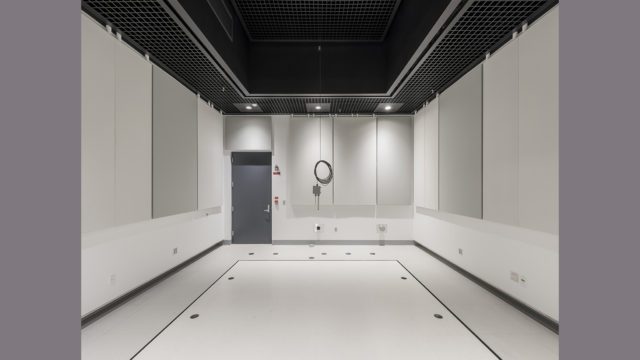Alex Odom
Associate Principal

Loud noises are attention-grabbing; they can be fun, like fireworks, or annoying, like a noisy neighbor. While extremely low-level sounds do not stand out as much to our ears, they can influence noise-sensitive equipment significantly. We have tools to examine these sounds, much like a microscope can reveal objects on the cellular level, to reveal a never-before-heard world.
Sound is measured in decibels (dB); a normal conversation might be 60 dB and a loud concert over 100 dB. Because of the logarithmic definition of the decibel, 0 dB does not mean there is no sound– it is only the quietest sound a human can hear. The human ear responds to pressure waves in the air, measured in Pascals (Pa). Zero dB corresponds to a pressure wave with an amplitude of 20 micro-Pa (20 x 10-6 Pa); for comparison, a normal conversation is around 20,000 micro-Pa.

Anechoic chambers are rooms designed to eliminate any sound reflections off the walls, ceilings, and floor. They are also usually designed to achieve a very low background noise level to avoid noise contamination when measuring the sound from a product or other device. Microsoft’s anechoic chamber measured an astounding -20.6 dB (~1.8 micro-Pa). It is hard to get much quieter without creating a vacuum; it is estimated that the noise produced by air molecules colliding with each other is about -24 dB. When people enter these ultra-quiet rooms, it can be unsettling. They start to hear the noises their own body generates, like their heartbeat or their stomach gurgling. The human ear not only listens for sounds but creates its own, called otoacoustic emissions. These noises are generated by the tiny hair cells within the cochlea, in response to an exterior auditory stimulation.Sounds are occurring on the cellular level too. Scientists can measure sounds less than -30 dB from individual cells using a nano-sized optical fiber. High-speed imagery techniques have been used to measure the vibration characteristics of cells in a new field of study called “cell quake elastography.” Tools like this may allow scientists to identify cell abnormalities and aid in the early diagnosis of diseases such as cancer.
The decibel is human-centric in its design, but other life forms hear and produce sound. The BBC captured noise from a slithering snail and the footfalls of a centipede in a fascinating video demonstrating the power of an anechoic chamber. Surprisingly, non-sentient life has been shown to be able to detect sounds as well. Studies have shown that some flowers will produce sweeter nectar in response to the noise of buzzing bees, and another plant will produce chemical toxins after hearing the sounds of caterpillar chewing as a defense mechanism.

More importantly to us, the most sensitive “listeners” are the precise technology we use in scientific and research facilities. Scanning electron microscopes (SEM) are a common tool used to produce high-resolution images at the nanometer (10-9 m) scale. Mechanical disturbances from the floor (vibration) and the air (acoustically-induced vibration) can affect data and ruin experiments. Sound waves colliding with the outside of the SEM can cause deflection of the electron column and deteriorate the image. For laboratories holding similar equipment, Acentech helps design HVAC systems and demising walls to ensure that a low-noise environment can be preserved.Researchers from the University of California, Berkeley are trying to determine if neutrinos (subatomic particles 500,000 times less massive than electrons) are their own antiparticles, with the help of a highly sensitive tool, the CUORE (Cryogenic Underground Observatory of Rare Events). The equipment is cooled to the coldest known temperature recorded in the entire universe: minus 459 degrees Fahrenheit (10 milliKelvin). At these low temperatures, acoustic waves transfer their energy to raise the temperature of the CUORE, corrupting the experiment. In addition to proper HVAC design, other ancillary equipment in the lab need to have proper noise control.
What may seem quiet to our ears might be “deafening” to many cutting edge technologies. Whether you are determining the integrity of a nanofiber layer for filtration or searching for answers in the interactions of quantum particles, small sounds can make a big difference. Acentech helps provide highly noise- and vibration-sensitive labs with the space they need to change the world.